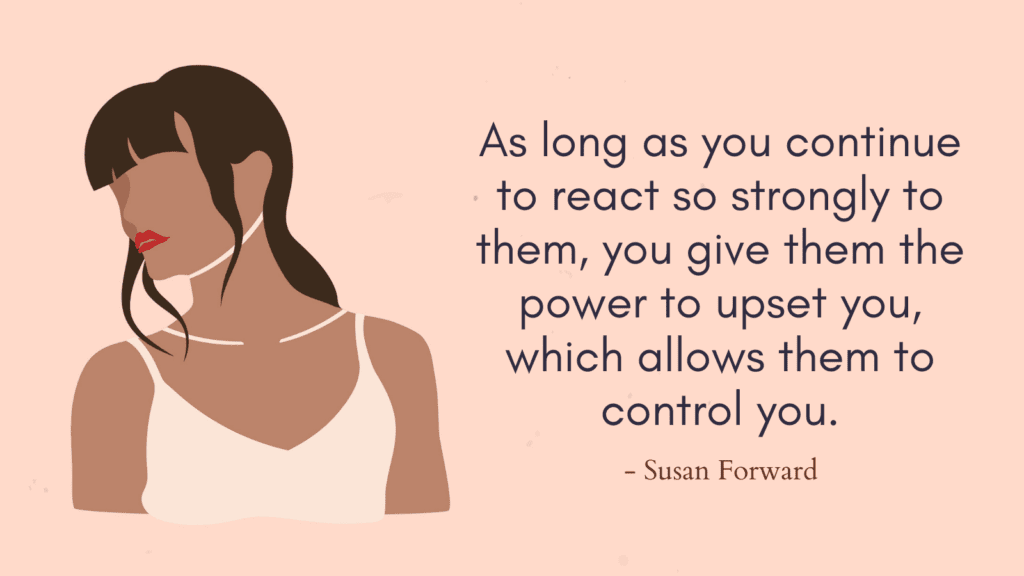Narcissism is a personality trait characterized by a sense of entitlement, a need for admiration, and a lack of empathy for others.
However, not all narcissists are the same, and psychologists have identified different types of narcissism that manifest in varying behaviors and attitudes.
Understanding these types can help in recognizing narcissistic behavior in yourself or others.
Narcissism vs. Narcissistic Personality Disorder (NPD)
Narcissism and Narcissistic Personality Disorder (NPD) are terms often used interchangeably, but they refer to different concepts.
Narcissism
Narcissism, in a general sense, refers to the presence of narcissistic traits in an individual’s personality.
These traits can include a strong sense of self-importance, a desire for admiration, and a lack of empathy for others.
Many people may exhibit some narcissistic traits at different points in their lives, and in moderation, these traits can even be seen as normal or healthy.
For example, having confidence in one’s abilities or seeking recognition for accomplishments can be beneficial in certain contexts.
However, when narcissistic traits are excessive or pervasive, they can lead to challenges in relationships, work, and other areas of life.
People with high levels of narcissism may struggle with criticism, have difficulty empathizing with others, and may prioritize their own needs over those of others.
Narcissistic Personality Disorder (NPD)
Narcissistic Personality Disorder is a clinical diagnosis listed in the Diagnostic and Statistical Manual of Mental Disorders (DSM-5).
NPD is characterized by a persistent pattern of grandiosity, a constant need for admiration, and a lack of empathy, which significantly impairs an individual’s ability to function in daily life.
To be diagnosed with NPD, an individual must exhibit several specific symptoms that cause significant distress or impairment in social, occupational, or other important areas of functioning. These symptoms include:
– A grandiose sense of self-importance
– Preoccupation with fantasies of unlimited success, power, brilliance, beauty, or ideal love
– Belief that they are special and unique and can only be understood by, or should associate with, other special or high-status people
– Need for excessive admiration
– Sense of entitlement
– Interpersonally exploitative behavior
– Lack of empathy
– Envy of others or a belief that others are envious of them
– Arrogant or haughty behaviors or attitudes
NPD is more than just having a few narcissistic traits; it is a pervasive and enduring pattern that significantly affects an individual’s life.
People with NPD often struggle with maintaining relationships, as their behavior can be damaging to others and themselves.
Related: Top 10 Signs A Narcissist Wants Your Attention
6 Types of Narcissists
1. Grandiose Narcissist
Characteristics:
- Displays a strong sense of superiority and entitlement.
- Seeks admiration and validation from others constantly.
- Often charismatic, confident, and assertive.
- May exploit or manipulate others to maintain their self-image.
Grandiose narcissists are often charming and socially skilled but can be domineering and insensitive to others’ needs.
2. Vulnerable (or Covert) Narcissist
Characteristics:
- Exhibits insecurity, sensitivity to criticism, and a fragile self-esteem.
- Seeks reassurance and validation but is often withdrawn and introverted.
- May appear shy, anxious, or depressed.
- Tends to feel victimized or misunderstood, harboring resentment towards others.
Vulnerable narcissists may be more passive-aggressive, using guilt or manipulation to gain sympathy or control.
Related: Top 12 Traits of a Narcissist
3. Malignant Narcissist
Characteristics:
- Displays traits of both narcissism and antisocial personality disorder.
- Lacks empathy and is often cruel, vindictive, and aggressive.
- Engages in manipulative, exploitative, and sometimes sadistic behaviors.
- May have paranoid tendencies, seeing others as threats or competitors.
Malignant narcissists are the most dangerous type, often engaging in harmful behaviors without remorse.
4. Communal Narcissist
Characteristics:
- Seeks admiration and validation through altruism and prosocial behavior.
- Believes they are morally superior or exceptionally good.
- Enjoys being seen as the “hero” or “savior” in social situations.
- May use their “good deeds” as a way to manipulate or control others.
Communal narcissists often present themselves as selfless, but their actions are driven by a need for recognition and praise.
5. Somatic Narcissist
Characteristics:
- Focuses on physical appearance, health, and fitness.
- Seeks validation through their body, looks, or physical achievements.
- May be obsessed with diet, exercise, and cosmetic enhancements.
- Often dismisses or devalues those who do not meet their physical standards.
Somatic narcissists derive their self-worth from their physicality and often flaunt their bodies or accomplishments to receive admiration.
Related: Somatic Narcissist: Top 7 Signs
6. Cerebral Narcissist
Characteristics:
- Values intelligence, intellect, and mental prowess above all else.
- Seeks validation through academic achievements, knowledge, or expertise.
- May appear arrogant, condescending, and dismissive of others’ opinions.
- Enjoys intellectual debates or discussions where they can display their knowledge.
Cerebral narcissists prioritize their mental abilities and often use their intellect to dominate or belittle others.
7. Overt Narcissist
Characteristics:
- Exhibits obvious, outward narcissistic traits such as arrogance, boastfulness, and a lack of empathy.
- Is openly self-centered and demanding of attention and admiration.
- Shows little concern for others’ feelings or needs.
- Tends to be confrontational and unapologetic about their behavior.
Overt narcissists are easy to identify due to their blatant, attention-seeking behavior and lack of subtlety.
8. Covert Narcissist
- Displays narcissism in more subtle, indirect ways.
- May appear modest or humble but harbors a deep sense of entitlement.
- Often manipulates others through passive-aggressive behavior or guilt-tripping.
- Seeks admiration through indirect means, such as playing the victim or being overly sensitive.
Covert narcissists are harder to spot because they often disguise their narcissism with a façade of vulnerability or humility.
Related: Narcissist Compassion: What Is It and How To Protect Yourself
How to Protect Yourself from Narcissistic Abuse?
Narcissistic abuse is a form of emotional and psychological manipulation perpetrated by someone with narcissistic traits.
Narcissists often have an inflated sense of self-importance, a lack of empathy, and a need for excessive admiration.
They may exhibit controlling behavior, blame-shifting, gaslighting, and other manipulative tactics to maintain power over their victims.
1. Recognizing the Warning Signs
Early detection is key to protecting yourself from narcissistic abuse. Here are some warning signs to watch out for:
Love Bombing: Love bombing is when a narcissist showers you with excessive attention, flattery, and affection at the beginning of a relationship. This tactic is used to quickly gain your trust and make you dependent on their approval. While it may feel intoxicating at first, it’s important to recognize that this behavior is often a red flag for deeper manipulation.
Gaslighting: Gaslighting is a form of psychological manipulation where the narcissist makes you question your reality. They might deny things they’ve said or done, accuse you of being too sensitive, or suggest that your memories are incorrect. This tactic is designed to make you doubt your perceptions and become more reliant on their version of reality.
Isolation: Narcissists often try to isolate their victims from friends, family, and other support systems. They may criticize your loved ones, create conflicts, or guilt-trip you into spending all your time with them. Isolation makes it easier for the narcissist to control you and harder for you to seek help.
Blame-Shifting and Projection: Narcissists rarely take responsibility for their actions. Instead, they shift the blame onto others, often accusing their victims of the very behaviors they themselves are guilty of. This tactic, known as projection, is used to deflect criticism and maintain their image of perfection.
Emotional Blackmail: Narcissists use emotional blackmail to manipulate their victims into doing what they want. They might threaten to leave you, withhold affection, or use your vulnerabilities against you. This form of coercion is intended to keep you under their control and prevent you from asserting your needs.
2. Set and Maintain Strong Boundaries
Boundaries are essential when dealing with a narcissist.
Clearly define what behaviors are unacceptable and stick to those limits.
This might mean limiting contact, refusing to engage in arguments, or not allowing them to manipulate your emotions.
Narcissists often test boundaries, so it’s important to remain firm and consistent.
Related: How Does a Narcissist React to Being Blocked? Top 10 Reactions
3. Educate Yourself About Narcissism
Knowledge is power.
Understanding narcissistic behavior and the tactics they use can help you recognize manipulation more quickly and respond effectively.
There are numerous resources available, including books, articles, and support groups, that can provide valuable insights into dealing with narcissistic individuals.
4. Strengthen Your Support System
A strong support system is vital when dealing with narcissistic abuse.
Surround yourself with people who care about you and who can provide perspective and support.
Friends, family, therapists, or support groups can help you process your experiences, validate your feelings, and offer advice on how to handle difficult situations.
5. Practice Self-Care and Self-Compassion
Narcissistic abuse can take a significant toll on your mental health, so it’s crucial to prioritize self-care.
Engage in activities that nourish your mind and body, such as exercise, meditation, journaling, or spending time in nature.
Additionally, practice self-compassion by acknowledging your feelings and treating yourself with kindness during this challenging time.
Related: Narcissist Blame Shifting: Top 5 Examples and How to Deal With It
6. Limit Contact or Go No Contact
If possible, limit your interactions with the narcissist.
This might mean reducing communication to the bare minimum, such as only discussing practical matters if you share responsibilities (e.g., co-parenting).
In more severe cases, going no contact—cutting off all communication—may be the best way to protect yourself.
This can be difficult but is often necessary for your mental health and recovery.
7. Document Everything
Narcissists are skilled at twisting narratives to suit their agenda.
If you’re dealing with a narcissist in a situation where you need to protect yourself legally or personally, document everything.
Keep records of conversations, incidents, and any manipulative behaviors.
This documentation can serve as evidence if needed and can also help you stay grounded in reality.
8. Reconnect with Your Identity
Narcissistic abuse often leaves victims feeling lost or disconnected from their true selves.
Take time to rediscover your interests, values, and passions.
Engage in activities that bring you joy and help you reconnect with your authentic self.
9. Practice Forgiveness (For Yourself)
Forgiving yourself is an essential part of healing.
Many victims of narcissistic abuse struggle with self-blame, wondering how they allowed themselves to be manipulated.
Understand that anyone can fall victim to a narcissist, and it’s important to be kind to yourself as you heal.
10. Set New Boundaries
As you heal, it’s essential to establish and maintain healthy boundaries in all areas of your life.
Boundaries protect your emotional well-being and ensure that you do not fall into similar patterns of abuse in the future.
Related: How To Stop Attracting Narcissists? Top 9 Tips

Conclusion
Recognizing the different types of narcissists can help in understanding the complexities of narcissistic behavior and its impact on relationships.
While not every narcissist fits neatly into one category, these distinctions provide insight into the various ways narcissism can manifest.
Whether you’re dealing with a grandiose, vulnerable, or malignant narcissist, understanding these traits can help you navigate interactions with greater awareness and caution.



